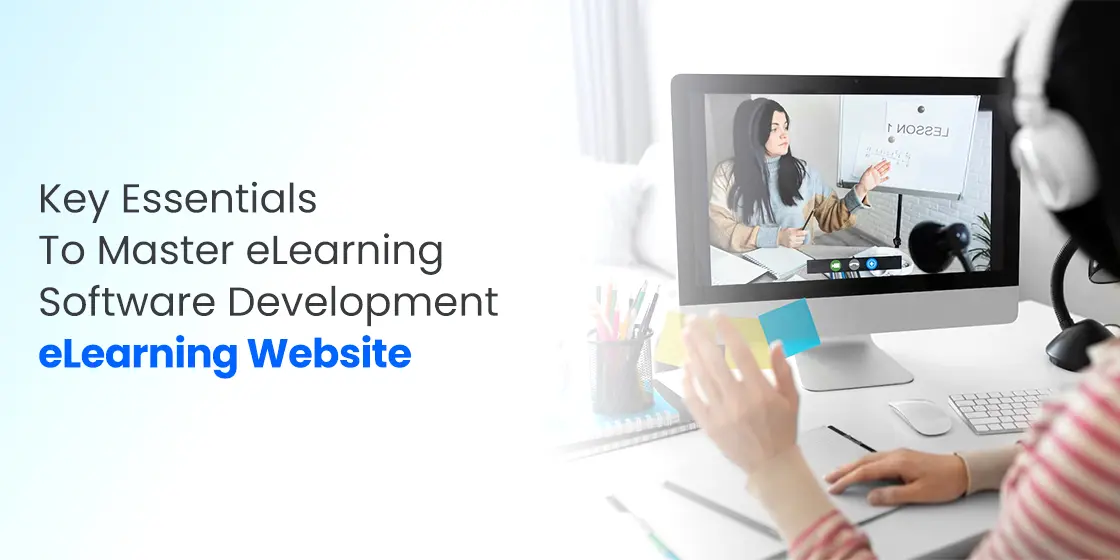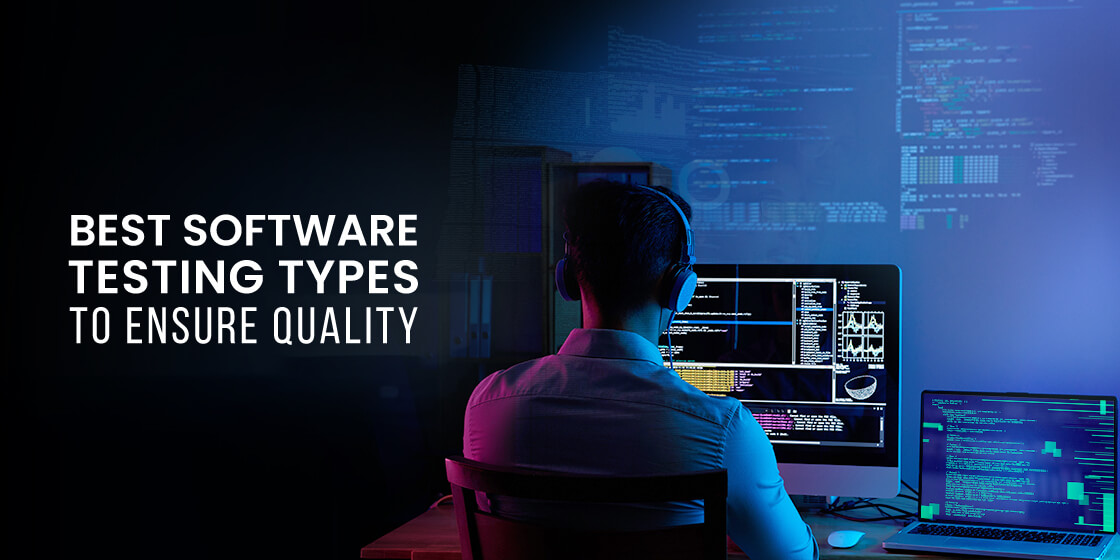Table of Content
Learn How to Build eLearning Software in an Organized Manner
In today’s fast-paced digital world, eLearning software development is rapidly transforming the way people access and engage with education. Traditional classroom settings, while still valuable, are no longer the only avenue for learning. With the rise of digital technologies, custom eLearning platforms are enabling learners of all ages to study at their own pace, from any location, and often on their own terms. This flexibility has made eLearning not just a trend but a vital part of modern education and professional training.
One of the key reasons eLearning software is gaining popularity is its ability to offer personalized, interactive, and scalable learning experiences. Whether it’s a corporate training program, or a skills development app, eLearning platforms can be tailored to meet the unique needs of specific audiences. Features like progress tracking, multimedia content, and mobile compatibility make the learning process more engaging and effective than many traditional methods.
As remote work become increasingly important in both academic and professional settings, the demand for high-quality software development services continues to grow. If you want to learn more about these software that are gaining market demand day by day, read this blog in detail. It will let you know the core steps related to eLearning software development, so that you can master the whole process effectively.
What is eLearning Software?

eLearning software is a digital platform or application designed to facilitate online learning and training. It provides tools and resources that enable users to access educational content, interact with instructors or peers, and assess their progress through various formats such as videos, quizzes, assignments, and forums. These platforms can be used across different devices and are often web-based, making them accessible from virtually anywhere with an internet connection.
At its core, eLearning software supports a wide range of learning environments. It allows for both real-time and self-paced learning, giving users the flexibility to choose when and how they engage with the material. Features often include learning management systems (LMS), content authoring tools, analytics dashboards, and integration with other digital tools to create a comprehensive learning ecosystem.
The functionality of eLearning software can vary based on its purpose. Some platforms focus on delivering structured courses with assessments and certifications, while others may prioritize collaborative learning. Regardless of the format, eLearning software is designed to enhance the learning experience by making it more accessible, engaging, and adaptable to individual needs—paving the way for a more inclusive and modern approach to education.
Fuel innovation by leveraging bespoke software solutions. Get in touch with our team of experts to build cutting-edge software products.
Get a QuoteUnderstanding the Rising Prominence of Online Learning
Online learning is gaining popularity because of its unmatched flexibility and convenience. Unlike traditional classroom settings, online learning allows individuals to access courses and educational resources from anywhere in the world. This is particularly beneficial for working professionals, parents, and students with busy schedules who may find it difficult to attend in-person classes. The ability to learn at one’s own pace and revisit materials as needed also contributes to a more personalized and effective learning experience.
Another reason for its growing popularity is the wide variety of courses and subjects available online. From academic degrees to creative skills and language learning, online platforms offer something for everyone. This vast selection empowers learners to pursue interests or advance their careers without geographical limitations. Additionally, many online programs are more affordable than traditional education, eliminating expenses related to commuting, accommodation, and physical materials.
The rise of technology has also played a significant role in enhancing the quality and engagement of online learning. Moreover, advancements in artificial intelligence and data analytics help personalize content, track progress, and improve outcomes. As digital literacy continues to grow globally, more individuals and institutions are embracing online learning as a practical, effective, and future-ready educational model.
eLearning Software Development: Core Steps to Follow

Developing an eLearning software requires to get a complete understanding how online education model works. Many institutions are moving towards this channel, so mastering the basics of eLearning software is important for development teams.
Analyze the eLearning Industry
To start market research in the eLearning industry, begin by clearly defining your target audience and objectives. Identify who your potential learners are and determine what problems your software aims to solve. Conduct primary research through surveys to gather insights about user preferences, learning habits, pain points, and functional requirements. Tools like Google Trends, Statista, and market analysis platforms can help reveal patterns in demand, popular course topics, and technological trends shaping the industry.
Next, perform a competitive analysis to understand the current landscape and assess how your product can stand out. Identify key players in the eLearning market, and evaluate their offerings, pricing models, user experience, and technology stack. This comprehensive research will enable you to identify opportunities, reduce risks, and create a value proposition tailored to the evolving needs of modern learners.
Prioritize Software Objectives
After completing market research, prioritize eLearning software objectives by aligning them with the most pressing needs and preferences identified among your target users. Start by categorizing findings into user-centric goals. Rank these needs based on frequency and intensity of demand across your research sources. Ensure that your objectives reflect the core problems your software is meant to solve, keeping user satisfaction and educational outcomes at the forefront.
Simultaneously, balance these user needs with business goals and technical feasibility. Evaluate which objectives offer the highest potential return on investment or strategic advantage. Create a phased roadmap that tackles critical features while planning for secondary enhancements. This structured prioritization helps maintain focus, align cross-functional teams, and ensure that your eLearning software delivers real value early in its lifecycle.
Start Core Development
Once eLearning software objectives are clearly defined, the development process should begin with a detailed planning and design phase. Start by creating user personas and user journey maps to guide functionality and user experience design. Collaborate with stakeholders to finalize core features such as content delivery methods, user management, assessments, and tracking tools. This ensures that the software is intuitive and aligns with both user expectations and educational goals before development resources are fully committed.
Following the design phase, establish a robust technical architecture and select the appropriate technology stack. Choose web programming languages, and tools that support scalability, data security, and cross-platform compatibility. Next, set up an agile development workflow with clearly defined sprints, allowing for iterative development, continuous integration, and early testing of key components. This approach allows teams to refine the product based on real-world use, reducing risk and accelerating time to market.
Test and Deploy
After completing core development, the next step is thorough testing to ensure the eLearning software is functional, and bug-free. Begin with unit testing and integration testing to verify that individual components and their interactions perform as intended. Meanwhile, it’s also critical to perform performance testing, security assessments, and compatibility checks across devices to ensure the platform is reliable, secure, and accessible to a wide user base.
Once the software passes all testing phases, move on to deployment. Start with a soft launch or beta release to a controlled group of users, allowing you to monitor real-world usage, and resolve any unforeseen issues. Implement automated monitoring tools to track system performance, error logs, and user behavior. After completing all these, provide onboarding materials, training, and support to help users adopt the platform effectively, ensuring a smooth transition from development to active use.
Frequently Asked Questions
| What is an eLearning software? An eLearning software is a digital platform designed to deliver, manage, and track educational content. It enables users to access courses, assessments, and interactive tools from any location using internet-connected devices. |
| Why eLearning software are becoming popular? eLearning software is becoming popular due to its flexibility, cost-effectiveness, and ability to provide on-demand learning. It supports remote access and continuous skill development, meeting the evolving needs of both individuals and organizations. |
| What is learning management system? A Learning Management System (LMS) is a software application used to create, deliver, and manage educational courses. It enables tracking of learner progress, and content distribution in both academic and corporate settings. |
Final Words
That sums up our entire blog in which we have discussed some key basics related to eLearning software development. Looking at the current trends, it is quite evident that the demand of online education apps is increasing day by day. It is therefore important to understand how to create an eLearning website using a step-by-step approach. This blog has discussed an organized approach to build these software, so make sure to read all the steps carefully to master the entire eLearning software development process.
Empower your digital initiatives with BariTechSol, a premier custom software development company. Our skilled team tailors cutting-edge solutions to your unique needs. Elevate your tech experience and stay ahead in the digital realm. Partner with BaritechSol and code the success of your next big idea.


